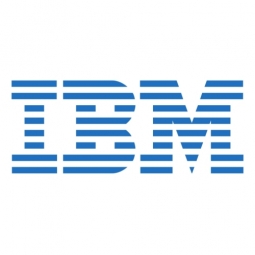Technology Category
- Analytics & Modeling - Real Time Analytics
- Functional Applications - Warehouse Management Systems (WMS)
Applicable Industries
- Buildings
Applicable Functions
- Product Research & Development
- Sales & Marketing
Use Cases
- Demand Planning & Forecasting
- Inventory Management
About The Customer
Bugaboo is a Dutch company that has experienced dramatic growth since its inception in 1999. Known for its trendy pushchairs, Bugaboo has become a global hit, with 15 branches worldwide and a factory in China. The company's head office is located in Amsterdam. The rapid growth of the company led to changes in planning and forecasting requirements, with a need for more financial flexibility, speed, and ease of management. The company also wanted to broaden its planning and forecasting capabilities. The implementation of IBM Cognos TM1 was a major step forward in Bugaboo's planning and forecasting activities.
The Challenge
Bugaboo, a Dutch company known for its trendy pushchairs, was facing challenges in generating accurate financial and sales forecasts in a timely manner. The company's rapid growth had led to changes in planning and forecasting requirements, and the existing system, IBM Cognos Planning, was reaching its limits. Performance-related issues were causing disruptions, and any changes to the planning model required the entire system to be halted. The model was split into four geographic regions to facilitate management outside office hours, but this meant that each change had to be implemented four times. Furthermore, Bugaboo wanted to broaden its planning and forecasting to include more than just financial and sales forecasts. For instance, the Innovation Department wanted to monitor costs at every stage of a project, from development through to production.
The Solution
Bugaboo implemented IBM Cognos TM1, an easy-to-manage platform for enterprise planning. This solution provided a more efficient and flexible approach to planning and forecasting, with extensive options for 'what if' scenarios and insights into planning history for future forecast fine-tuning. The implementation of IBM Cognos TM1 was quick, going live within three months after extensive user testing. The new system consolidated all planning information in one place, including profit and loss data, investments, exchange rates, and employee data. It also allowed for the easy and quick implementation of changes in models without affecting users. The solution was scalable and could handle large amounts of data without performance or management issues. Additionally, it enabled various departments to generate detailed reports on estimated and actual costs.
Operational Impact
Quantitative Benefit

Case Study missing?
Start adding your own!
Register with your work email and create a new case study profile for your business.
Related Case Studies.

Case Study
Energy Saving & Power Monitoring System
Recently a university in Taiwan was experiencing dramatic power usage increases due to its growing number of campus buildings and students. Aiming to analyze their power consumption and increase their power efficiency across 52 buildings, the university wanted to build a power management system utilizing web-based hardware and software. With these goals in mind, they contacted Advantech to help them develop their system and provide them with the means to save energy in the years to come.

Case Study
Intelligent Building Automation System and Energy Saving Solution
One of the most difficult problems facing the world is conserving energy in buildings. However, it is not easy to have a cost-effective solution to reduce energy usage in a building. One solution for saving energy is to implement an intelligent building automation system (BAS) which can be controlled according to its schedule. In Indonesia a large university with a five floor building and 22 classrooms wanted to save the amount of energy being used.

Case Study
Powering Smart Home Automation solutions with IoT for Energy conservation
Many industry leaders that offer Smart Energy Management products & solutions face challenges including:How to build a scalable platform that can automatically scale-up to on-board ‘n’ number of Smart home devicesData security, solution availability, and reliability are the other critical factors to deal withHow to create a robust common IoT platform that handles any kind of smart devicesHow to enable data management capabilities that would help in intelligent decision-making

Case Study
Protecting a Stadium from Hazardous Materials Using IoT2cell's Mobility Platform
There was a need for higher security at the AT&T Stadium during the NFL draft. There was a need to ensure that nuclear radiation material was not smuggled inside the stadium. Hazmat materials could often be missed in a standard checkpoint when gaining entry into a stadium.

Case Study
Commercial Building Automation Boosts Energy Efficiency
One of the challenges to building automation is the multitude of non-interoperable communications protocols that have evolved over the years. Buildings have several islands of automation. Bridging the islands of different automation without losing the considerable investment in each specialized control network is the main focus in this solution.








